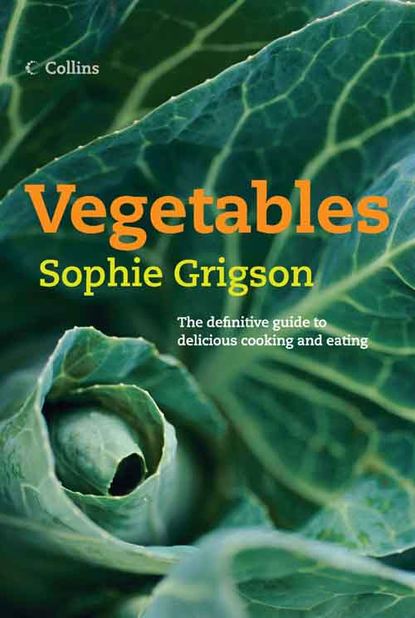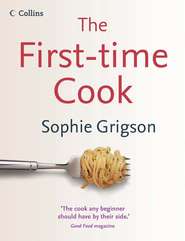По всем вопросам обращайтесь на: info@litportal.ru
(©) 2003-2024.
✖
Vegetables
Настройки чтения
Размер шрифта
Высота строк
Поля
Serves 6
3 medium fresh beetroots, roughly 300–350g (ll-12oz)
1 teaspoon cumin seeds
1 teaspoon coriander seeds
250g (9oz) soured cream or thick Greek-style yoghurt
1–2 tablespoons lemon juice
salt and pepper
Trim each beetroot, leaving about 3cm (1
/
in) of stalk and the root in place. Wrap each one in foil, place in a baking dish and roast (see above) until tender. Dry-fry the cumin and coriander seeds in a heavy frying pan over a moderate heat until the scent curls temptingly round the kitchen. Tip into a bowl or a mortar and leave to cool, then grind to a powder.
As soon as they are cool enough to handle, skin the beetroots. Set half of one aside; cut up the rest roughly and toss into a food processor. Add all the other ingredients, including the ground spices, and process until smooth. Grate the reserved beetroot or chop finely (messy, I know, but if you want that rather attractive, not-quite-perfectly-smooth texture, it has to be done) and stir into the mixture. Taste and adjust the seasonings.
Serve at room temperature with warm pitta bread, and sticks of carrot, celery, pepper or cucumber.
Beetroot, clementine and pine nut salad with orange dressing
Beetroot and orange work prettily and tastefully together, in every sense of the word. Serve this as a side dish or as a first course. You can make it more substantial by adding big flakes of hot-smoked salmon or trout. Alternatively, tear up a brace of buffalo mozzarella and add them, carefully so that they don’t stain, after the salad has been dished up.
Serves 4–6
4 beetroots, roasted, skinned and cut into wedges
4 clementines or ortaniques
a good handful of flat-leaf parsley leaves
3 small shallots, thinly sliced into rings
3 tablespoons pine nuts, toasted
Dressing
5 tablespoons extra virgin olive oil
grated zest of 2 clementines
2–3 tablespoons rice vinegar or cider vinegar
salt and pepper
To make the dressing put the oil and zest into a pan and infuse over a very low heat for 20 minutes. Strain and cool. Whisk the vinegar with salt and pepper, then gradually whisk in the orange oil. Taste and adjust seasonings.
As soon as the beetroot is cooked and cut up, toss with a little of the dressing, then leave to cool. Peel the clementines and slice thinly. Just before serving, toss the clementine discs with the parsley leaves, shallots, pine nuts and the remaining dressing, then arrange in a casual but artful way in a serving dish or on individual plates with the beetroot.
Blushing dauphinoise
This is a dish of heavenly decadence, laden with cream, spiked gently with a touch of horseradish. Like a standard potato dauphinoise, it is something for special occasions only, and there is no point even thinking about making it if you are trying to cut down on fat. I would actually be quite happy to gorge on this as a main course, but more conventionally, it sits well with roast feathered game, or a fine joint of beef.
Allow plenty of time for the dauphinoise to cook – this is not a dish to be rushed. Too high a heat will curdle the cream and blacken the top without ever achieving the melting texture you are aiming for.
Serves 6–8
15g (1/2 oz) butter
300–450ml (10–15floz) whipping cream
300ml (10floz) crème fraîche
3 tablespoons creamed horseradish
550g (11/4 lb) slightly waxy maincrop potatoes, such as Cara or larger Charlottes, peeled and very thinly sliced
500g (1 lb 2 oz) beetroot, peeled and thinly sliced
8 canned anchovies, roughly chopped (optional)
salt and pepper
Preheat the oven to 150°C/300°F/Gas 2. Grease an ovenproof gratin dish thickly with the butter. Beat the whipping cream into the crème fraîche along with the horseradish.
Lay about one-third of the potato slices over the bottom of the buttered dish. Season with salt and pepper, then cover with half the beetroot and sprinkle over half the anchovies, if using. Season again, then pour over enough of the cream mixture to come up to the level of the beetroot. Repeat the layers and then finish with the last third of the potato. Pour over the remaining cream, topping up with more whipping cream if necessary, so that the cream fills all the gaps and rises until about level with the top of the potatoes. Season again.
Bake, uncovered, for about 2 hours, until the potatoes and beetroot are tender all the way through, and the top is richly browned with traces of purple-pink cream bubbling up at the sides. Serve hot or warm.
Carrots (#ulink_a18d3bfb-a8f2-56bd-947c-bd3d03d608a5)
I like carrots. You like carrots. Everyone likes carrots. No point analysing their success – we know that they do a brilliant job bobbing up time and again on plates the world over. Naturally, there are carrots and then there are carrots. And by that I mean that some carrots have the most exquisite sweet carroty flavour, so good you should really just gobble them up raw, and then sadly, other carrots are dull and lacklustre, providing, one hopes, vitamins and other good-health requirements, if not a great deal in realms of pleasure.
There is no telling before the first bite, which makes buying carrots the tamest form of Russian roulette going. There are people who swear blind that organic carrots taste better than non-organic, and often they do. But no one has yet managed to convince me that it is their organicness that makes the difference. No, I reckon that it’s a lot more to do with variety, conditions in the field, freshness and luck, as well as good husbandry.
You may also not be aware that the orange carrot is a comparatively modern phenomenon, and not one that occurs in the wild. The true colour of the carrot is off-white in the case of the Mediterranean native, or purple or red when growing in more exotic places like Afghanistan, though one imagines that there aren’t many left growing in the wild there. You can, however, find purple carrots closer to home in more hospitable surroundings. They are still eaten on the island of Mallorca – a trip to the excellent covered market in the heart of Palma is all it takes to track them down. The difference in taste is minimal but the colour is sheer drama.
Practicalities
BUYING
A happy carrot is firm from tip to stem, no bruising or discoloration, with a pleasing light carroty smell. The slightest hint of flabbiness spells disaster, and slimy ends or rotting soft spots are to be avoided like the plague.
Buying carrots in bunches, with a duster of fluffy green leaves, is the only way you can be sure that they are newly tugged from the earth, but since they store rather well (especially with a dusting of soil still protecting them) freshness is not the critical issue it is with so many other vegetables. Take advantage of it when bunched carrots are on offer, and for the rest of the year pick out carrots of similar size to each other so that they cook evenly. Really small mini carrots, cute though they are, often taste of very little. Costwise it makes sense to go for larger carrots, which should have developed more depth of flavour. The swelling of ginormous carrots, on the other hand, may be partially due to too much water, so they have a tendency to dullness. These are crude generalisations, so there will always be exceptions, but they are the best I can offer as guidelines.







